ISO/IEC FINAL COMMITTEE DRAFT 15693-1
© ISO
ISO/IEC FCD 15693-1
ISO/IEC JTC1/SC17 N 1355
Identification cards —
Contactless integrated circuit(s) cards —
Vicinity Integrated Circuit(s) Card
Part 1: Physical characteristics
�
�
Contents
1 Scope ............................................................................................................................. 2
2 Normative references................................................................................................... 2
3 Definitions, abbreviations and symbols..................................................................... 3
4 Physical characteristics .............................................................................................. 3
Table 1 – Frequency vs Magnetic Field Strength .......................................................... 4
Table 2 - Frequency vs Electric Field Strength............................................................. 4
Annex A (informative) Standards compatibility and Surface quality…………………..6
Annex B A (informative) Hole Slot .................................................................................. 7
Annex C (informative) Bibliography ............................................................................... 8
Figure B 1 – Hole Slot for Portrait Orientation……………………………………………..7
Figure B 2 – Hole Slot for Landscape Orientation ........................................................ 7
�
ISO/ IEC FINAL COMMITTEE DRAFT 15693-1
© ISO
Foreword:
ISO (the International Organisation for Standardization) and IEC (the International Electrotechnical Commission)
form the specialized system for worldwide standardization. National bodies that are members of ISO or IEC
participate in the development of International Standards through technical committees established by the
respective organization to deal with particular fields of technical activity. ISO and IEC technical committees
collaborate in fields of mutual interest. Other international organizations, governmental and non-governmental, in
liaison with ISO and IEC, also take part in the work.
International Standards are drafted in accordance with the rules given in the ISO/IEC Directives, Part 3.
In the field of information technology, ISO and IEC have established a joint technical committee, ISO/IEC JTC1.
Draft International Standards adopted by the joint technical committee are circulated to national bodies for
voting. Publication as an International Standard requires approval by at least 75 % of the national bodies casting
a vote.
International Standard ISO/IEC 15693-1 was prepared by Joint Technical Committee ISO/IEC/JTC1, Information
Technology.
ISO/IEC 15693 consists of the following parts, under the general title Identification cards – Contactless
integrated circuit(s) cards – Vicinity Cards:
-Part 1: Physical characteristics
-Part 2: Radio frequency Power, Signal interface, Initialisation, and Anticollision
-Part 3: TBD Transmission Protocols
iii
�
ISO/IEC FINAL COMMITTEE DRAFT 15693-1
© ISO
Introduction
ISO/IEC 15693 is one of a series of International Standards describing the parameters
for identification cards defined in ISO 7810 and the use of such cards for international
interchange.
This part of ISO/IEC 15693 describes the Physical characteristics of vicinity cards.
This International Standard does not preclude the incorporation of other standard
technologies on the card, such as those referenced in the informative annex.
Contactless Card Standards cover a variety of types as embodied in ISO/IEC 10536
(Close coupled cards), ISO/IEC 14443 (Proximity cards), ISO/IEC 15693 (Vicinity cards).
These are intended for operation when very near, nearby and at a longer distance from
associated coupling devices respectively.
�
�
DRAFT INTERNATIONAL STANDARD © ISO ISO/ IEC FINAL COMMITTEE DRAFT 15693-1
Identification Cards — Contactless Integrated Circuit(s)
Cards —
Part 1: Physical Characteristics
1 Scope
This part of ISO/IEC 15693 specifies the physical characteristics of contactless integrated circuit(s) cards, -
Vicinity Cards, (VICC). It applies to identification cards of the ID-1 card type operating in vicinity of a
coupling device.
This part of ISO/IEC 15693 shall be used in conjunction later parts of ISO/IEC 15693, which are in
development.
Other types of contactless integrated circuit(s) cards, formats or interfaces, which operate at various
distances, were developed (ISO/IEC 10536 and 14443) and may be developed in the future, which may
require other international standards to be written.
2 Normative reference(s)
The following standards contain provisions which, through reference in this text, constitute provisions of this
part of ISO/IEC 15693. At the time of publication, the editions indicated were valid. All standards are subject
to revision, and parties to agreements based on this part of ISO/IEC 14443 are encouraged to investigate
the possibility of applying the most recent editions of the standards listed below. Members of IEC and ISO
maintain registers of currently valid International Standards.
ISO/IEC 7810:1995, Identification cards – Physical characteristics
ISO/IEC 10373: Identification cards – Test methods
3 Definitions, abbreviations and symbols
3.1
Definitions
For the purposes of this part of ISO/IEC 15693, the following definitions apply:
3.1.1
Integrated circuit(s) (IC):
Electronic component(s) designed to perform processing and memory functions.
2
�
© ISO
ISO/ IEC FINAL COMMITTEE DRAFT 15693-1
3.1.2
Contactless:
Pertaining to the achievement of signal exchange with and supplying power to the card without the use of
galvanic elements.
3.1.3
Contactless integrated circuit(s) card:
An ID-1 card type (as specified in ISO/IEC 7810) into which integrated circuit(s) have been placed and in
which communication to such integrated circuit(s) is done in contactless manner.
3.1.4
Vicinity Cards; Vicinity Integrated Circuit(s) Cards (VICC):
An ID-1 card type into which integrated circuit(s) and a coupling means have been placed and in which
communication to such integrated circuit(s) is done by inductive coupling in the vicinity of a coupling device.
3.1.5
Vicinity coupling device (VCD):
The reader/writer device that uses inductive coupling to provide power to the VICC and also to control the
data exchange with the VICC.
4 Physical characteristics
4.1 General
The VICC shall have physical characteristics according to the requirements specified for ID-1 cards in
ISO/IEC 7810.
4.2 Dimensions
The nominal dimensions of the VICC shall be as specified in ISO/IEC 7810 for ID-1 cards.
4.3 Additional characteristics
4.3.1 Ultra-violet light
This part of the ISO/IEC 15693 excludes requirements for protection of VICC against the effects of ultra-
violet light levels greater than those in ordinary daylight at sea level. Where greater protection is needed it
shall be the responsibility of the card manufacturer to provide it and to state the tolerable level of ultra-violet
light.
4.3.2 X-rays
The VICC shall continue to operate as intended after exposure of either VICC face to medium-energy X-
radiation, with energy 100 keV, of a cumulative dose of 0.1 Gy per year.
Note This corresponds to approximately twice the maximum annual recommended dose to which humans may be exposed.
4.3.3 Dynamic bending stress
The VICC shall continue to operate as intended after testing in accordance with the test methods described
in ISO/IEC 10373 where the maximum deflection about the short and long cards axis are hwA = 20mm and
hwB = 10mm
4.3.4 Dynamic torsional stress
The VICC shall continue to operate as intended after testing in accordance with the test methods described
in ISO/IEC 10373 with the angle of rotation, α = 15o
3
�
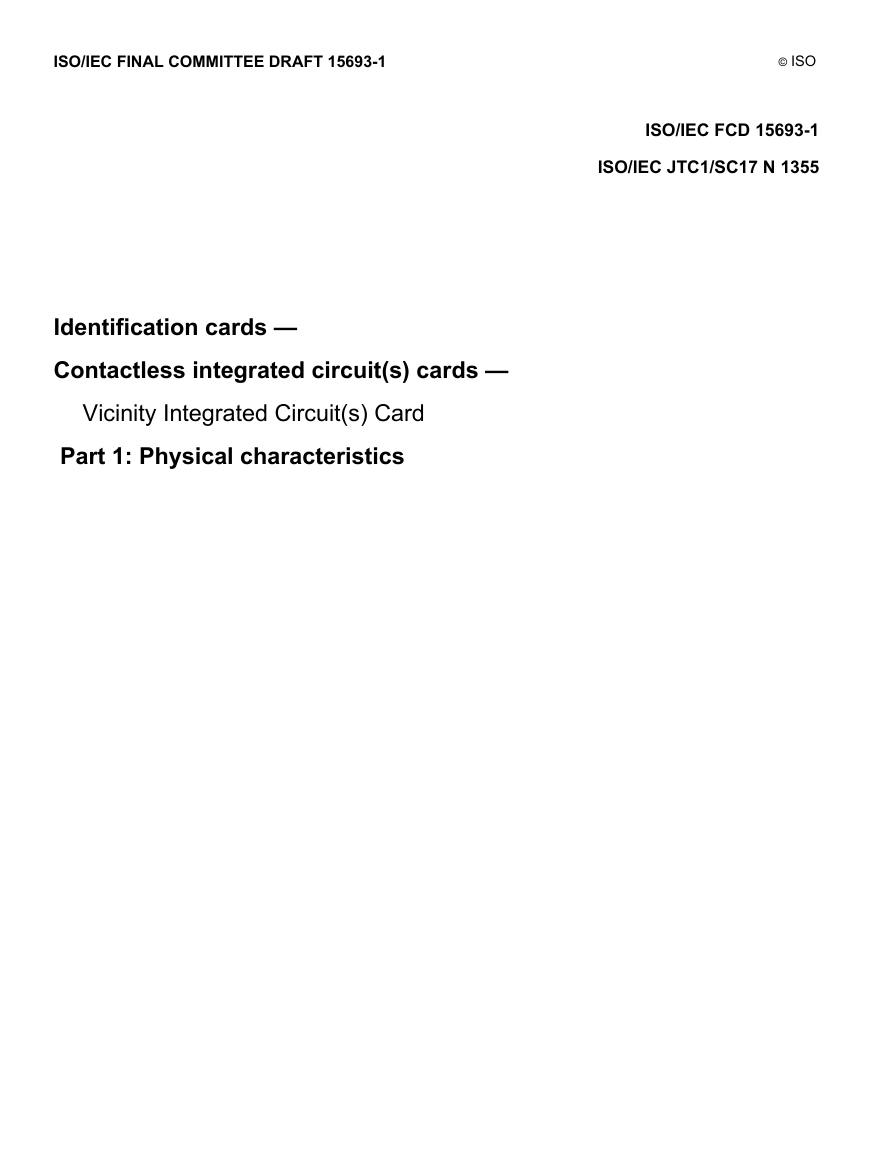


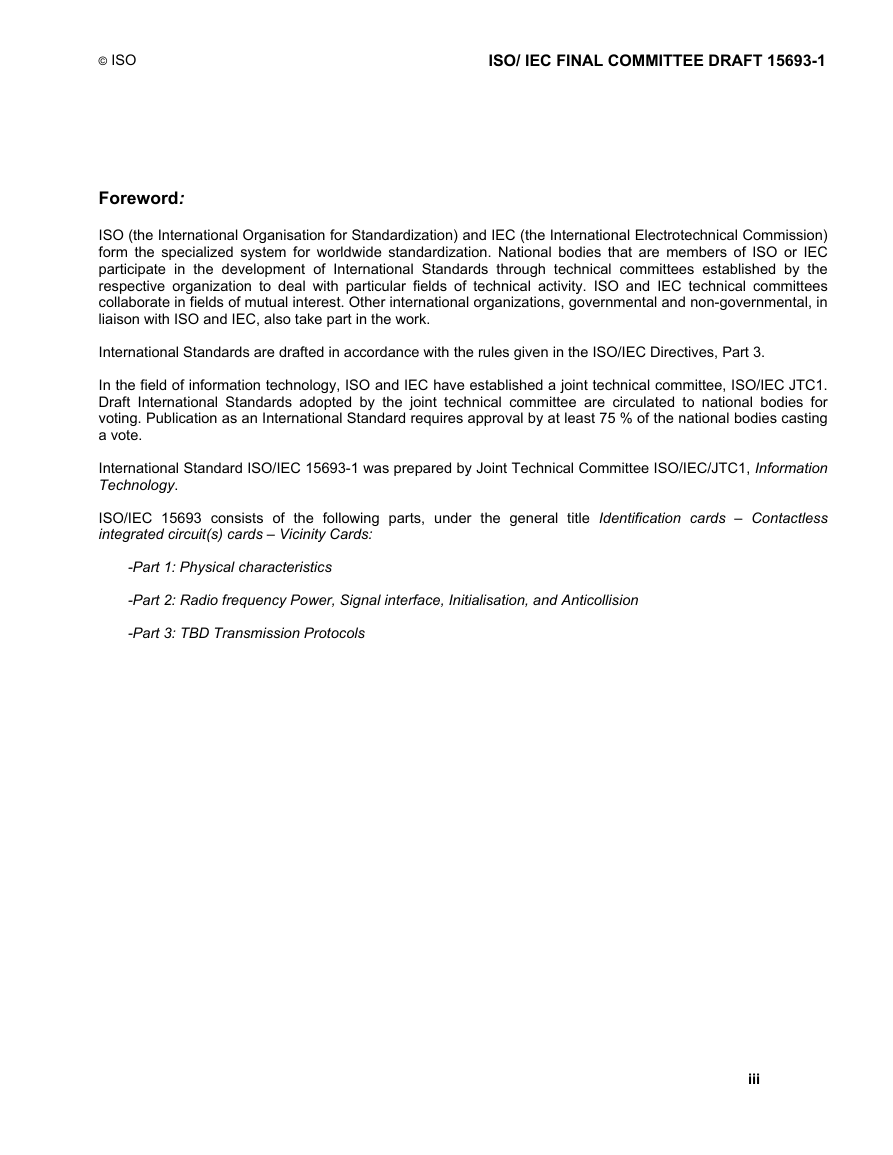
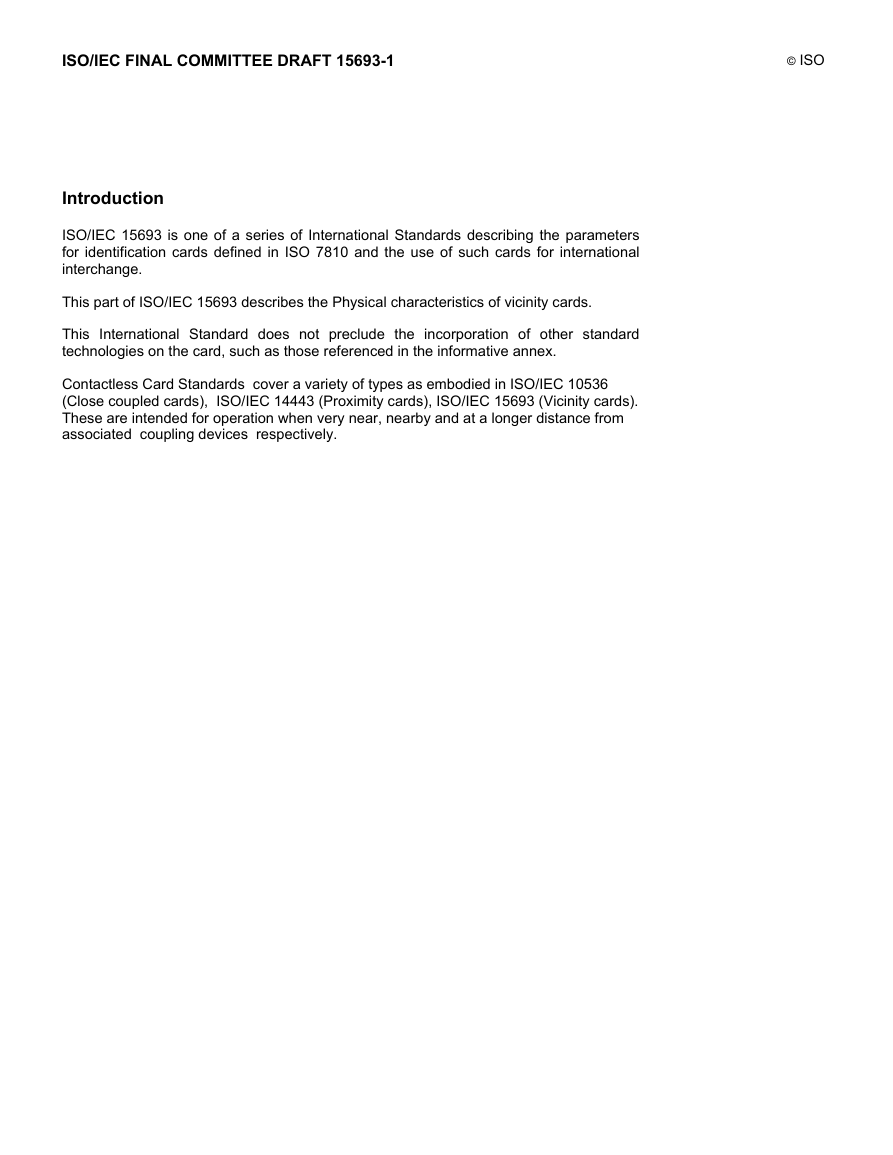

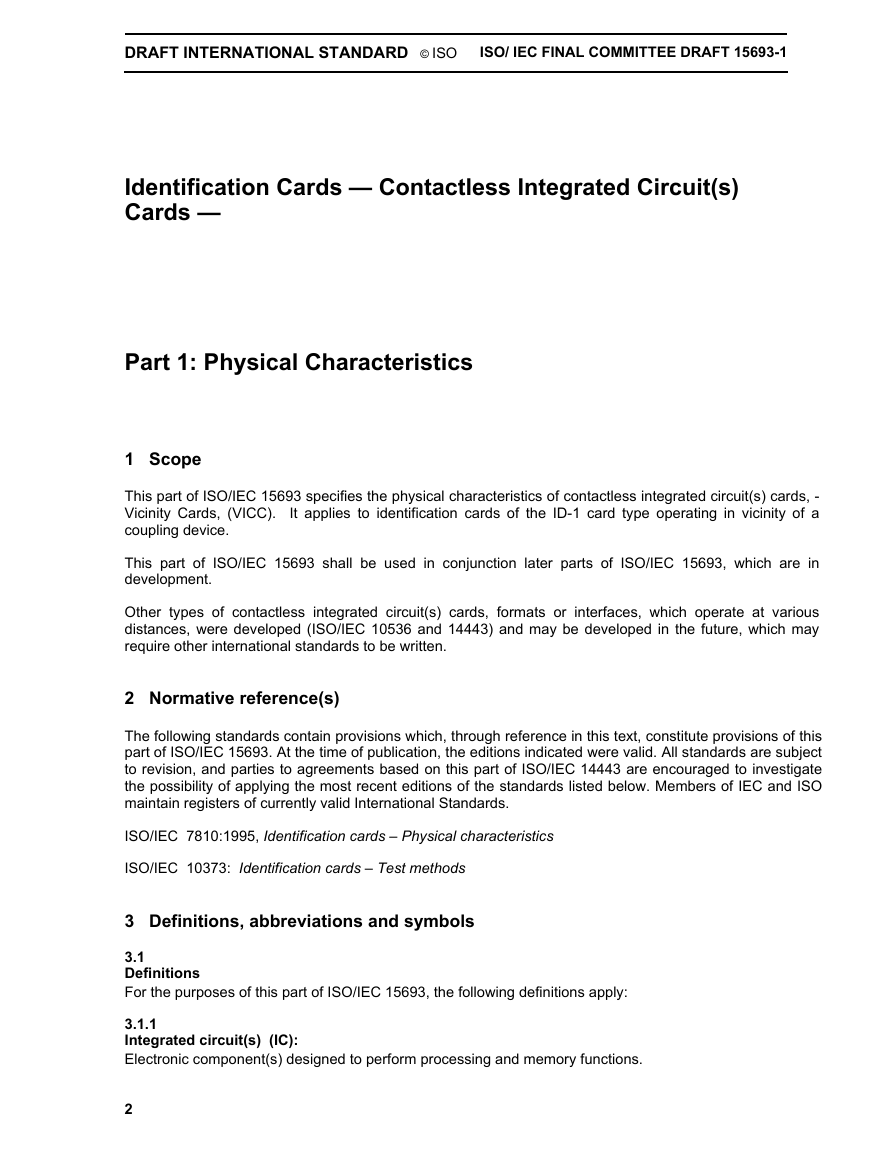
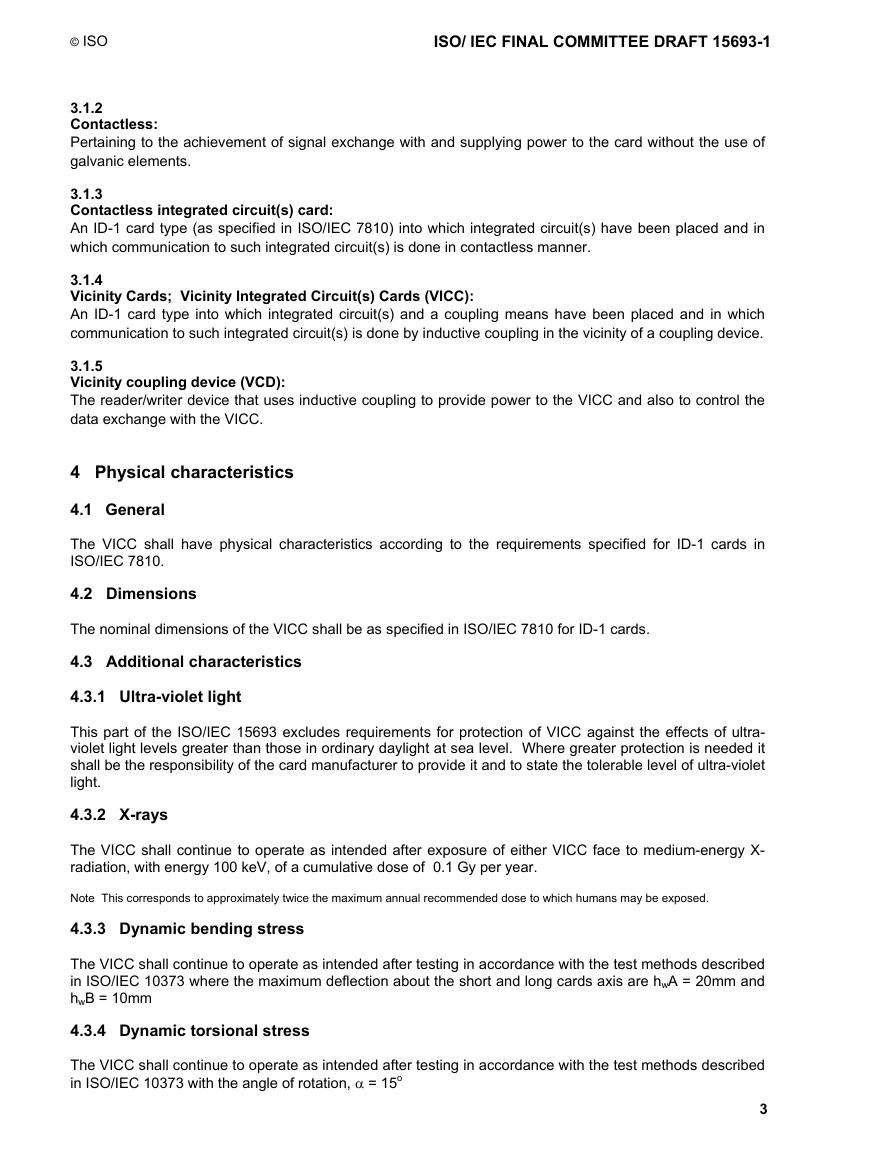








 2023年江西萍乡中考道德与法治真题及答案.doc
2023年江西萍乡中考道德与法治真题及答案.doc 2012年重庆南川中考生物真题及答案.doc
2012年重庆南川中考生物真题及答案.doc 2013年江西师范大学地理学综合及文艺理论基础考研真题.doc
2013年江西师范大学地理学综合及文艺理论基础考研真题.doc 2020年四川甘孜小升初语文真题及答案I卷.doc
2020年四川甘孜小升初语文真题及答案I卷.doc 2020年注册岩土工程师专业基础考试真题及答案.doc
2020年注册岩土工程师专业基础考试真题及答案.doc 2023-2024学年福建省厦门市九年级上学期数学月考试题及答案.doc
2023-2024学年福建省厦门市九年级上学期数学月考试题及答案.doc 2021-2022学年辽宁省沈阳市大东区九年级上学期语文期末试题及答案.doc
2021-2022学年辽宁省沈阳市大东区九年级上学期语文期末试题及答案.doc 2022-2023学年北京东城区初三第一学期物理期末试卷及答案.doc
2022-2023学年北京东城区初三第一学期物理期末试卷及答案.doc 2018上半年江西教师资格初中地理学科知识与教学能力真题及答案.doc
2018上半年江西教师资格初中地理学科知识与教学能力真题及答案.doc 2012年河北国家公务员申论考试真题及答案-省级.doc
2012年河北国家公务员申论考试真题及答案-省级.doc 2020-2021学年江苏省扬州市江都区邵樊片九年级上学期数学第一次质量检测试题及答案.doc
2020-2021学年江苏省扬州市江都区邵樊片九年级上学期数学第一次质量检测试题及答案.doc 2022下半年黑龙江教师资格证中学综合素质真题及答案.doc
2022下半年黑龙江教师资格证中学综合素质真题及答案.doc